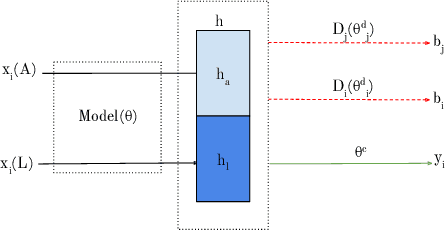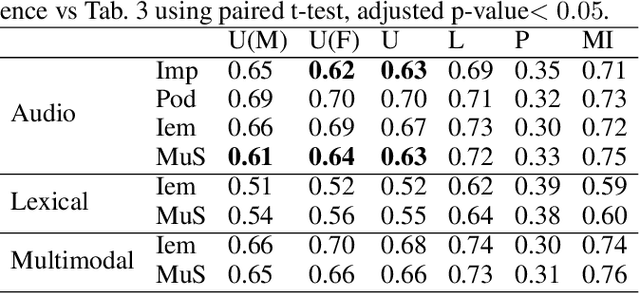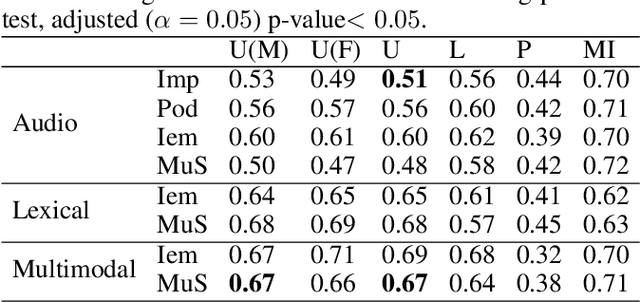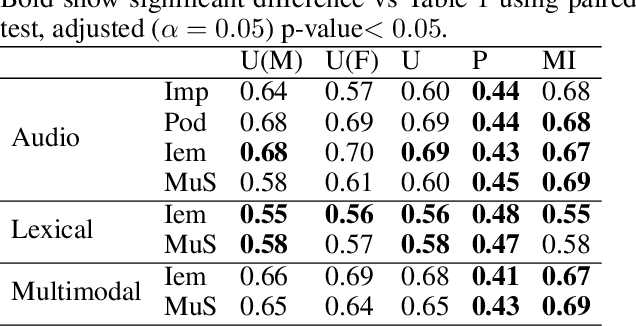Privacy Enhanced Multimodal Neural Representations for Emotion Recognition
Paper and Code
Oct 29, 2019



Many mobile applications and virtual conversational agents now aim to recognize and adapt to emotions. To enable this, data are transmitted from users' devices and stored on central servers. Yet, these data contain sensitive information that could be used by mobile applications without user's consent or, maliciously, by an eavesdropping adversary. In this work, we show how multimodal representations trained for a primary task, here emotion recognition, can unintentionally leak demographic information, which could override a selected opt-out option by the user. We analyze how this leakage differs in representations obtained from textual, acoustic, and multimodal data. We use an adversarial learning paradigm to unlearn the private information present in a representation and investigate the effect of varying the strength of the adversarial component on the primary task and on the privacy metric, defined here as the inability of an attacker to predict specific demographic information. We evaluate this paradigm on multiple datasets and show that we can improve the privacy metric while not significantly impacting the performance on the primary task. To the best of our knowledge, this is the first work to analyze how the privacy metric differs across modalities and how multiple privacy concerns can be tackled while still maintaining performance on emotion recognition.
 Add to Chrome
Add to Chrome Add to Firefox
Add to Firefox Add to Edge
Add to Edge